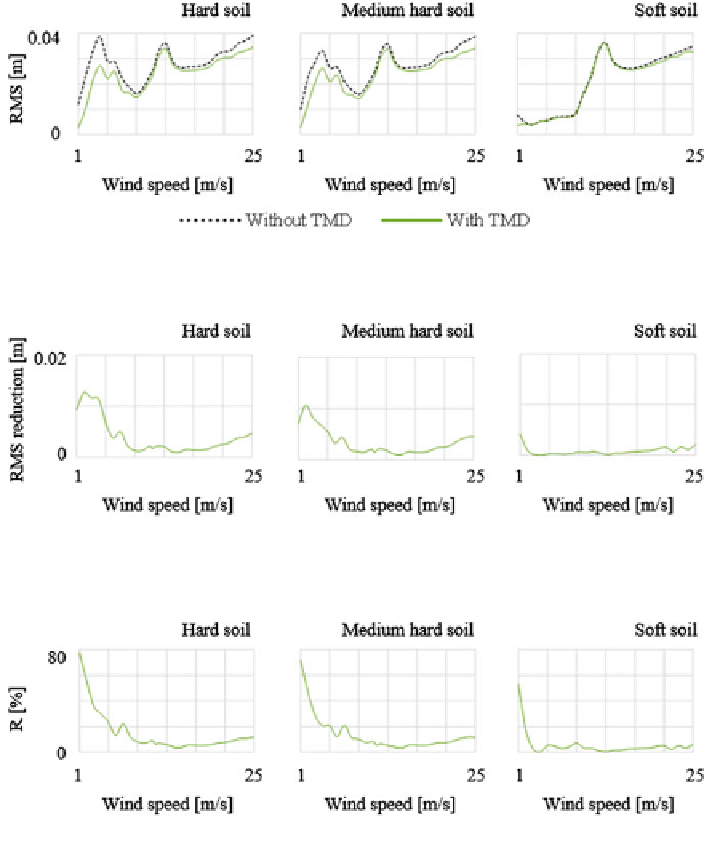Environmental Engineering Reference
In-Depth Information
when compared to the presented results with rigid ground connection in Sect.
12.4.
3.1
. On the other hand, soft soil causes a significant change in the tower response.
The main reason for this major change is the frequency shift. As the difference
between the fundamental frequency of tower bending mode and the 3P-frequency
grows, the possibility of resonant vibrations reduces. This can be clearly identified
in the time history of tower vibration at cut-in wind speed 3 m/s (Fig.
12.30
).
The evaluation of RMS-values of tower vibrations is presented in Figs.
12.31
,
12.32
, and
12.33
. As discussed in Sect.
12.4.3.1
, TMD reduces especially the
resonant vibrations efficiently. Therefore, the vibration mitigation of the wind
Fig. 12.31
RMS-values of onshore wind turbine tower deflection with and without TMD
Fig. 12.32 Difference between the RMS-values of onshore wind turbine tower deflection with
and without TMD
Fig. 12.33
Reduction factors of TMD attached to the onshore wind turbine for different wind

